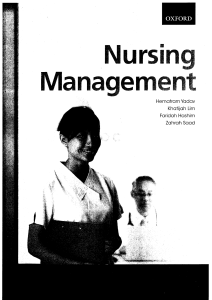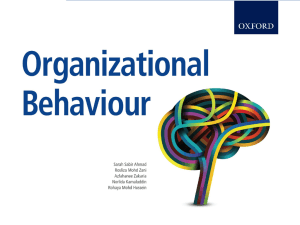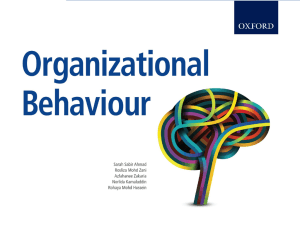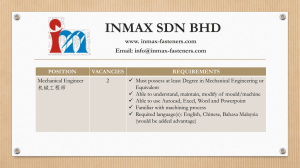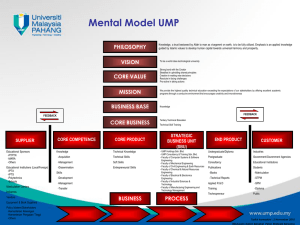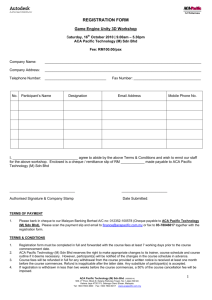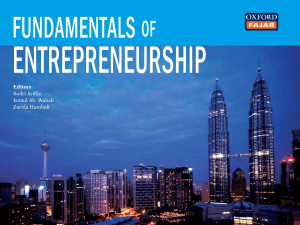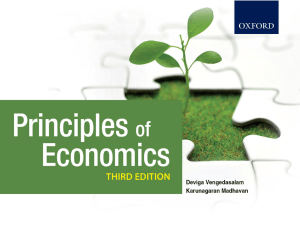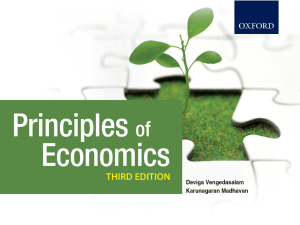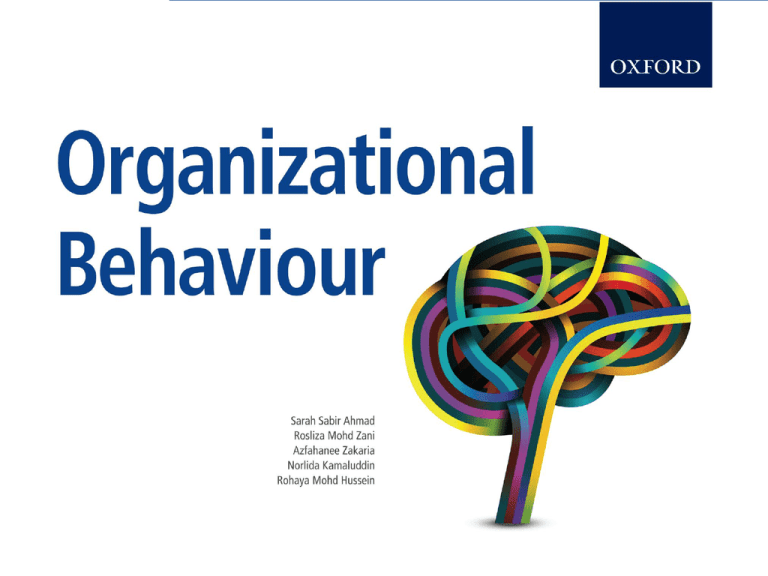
Organizational Behaviour
© Oxford Fajar Sdn. Bhd. (008974-T), 2013
All Rights Reserved
1– 1
Chapter 10
GROUPS & WORK TEAMS
Organizational Behaviour
© Oxford Fajar Sdn. Bhd. (008974-T), 2013
All Rights Reserved
1– 2
LEARNING OUTCOMES
Define groups and teams
Explain the characteristics of a group
Discuss the development of groups and teams
Identify the characteristics of effective team
performance
Discuss ways to manage adverse behaviour in
a group
Organizational Behaviour
© Oxford Fajar Sdn. Bhd. (008974-T), 2013
All Rights Reserved
1– 3
INTRODUCTION
Much of the activity within organizations occurs
within groups – from informal groups of
employees to formal autonomous work groups.
Group activities can be critical to the success of
the organization.
Organizational Behaviour
© Oxford Fajar Sdn. Bhd. (008974-T), 2013
All Rights Reserved
1– 4
DEFINITION OF GROUPS AND
TEAMS
A work group is a collection of people working
in the same area or placed together to complete
a task.
A team is defined as a small number of people
with complementary skills who are committed to
a common purpose, a set of performance goals,
and an approach for which they hold
themselves mutually accountable.
Organizational Behaviour
© Oxford Fajar Sdn. Bhd. (008974-T), 2013
All Rights Reserved
1– 5
REASONS PEOPLE JOIN
GROUPS
COMPANIONSHIP
• Groups allow members to simply be in the
company of other people
SURVIVAL
AND SECURITY
• From a historic perspective, our ancestors
form groups for hunting and defense
AFFILIATION
AND STATUS
• Membership into various groups can provide
individuals with certain social status or security
POWER
AND CONTROL
• With group membership comes the opportunity
for leadership roles
ACHIEVEMENT
• Groups have the capability to achieve more
than individuals acting alone
Organizational Behaviour
© Oxford Fajar Sdn. Bhd. (008974-T), 2013
All Rights Reserved
1– 6
TYPES OF GROUPS AND
TEAMS
FORMAL AND INFORMAL GROUPS
FORMAL GROUP
– Designed by top management for
achieving organizational goals
– Concentrates more on the performance of a job
– People are placed in hierarchy and their status
determined accordingly
– Coordination of members are controlled through
processes and procedures
Organizational Behaviour
© Oxford Fajar Sdn. Bhd. (008974-T), 2013
All Rights Reserved
1– 7
TYPES OF GROUPS AND
TEAMS
INFORMAL GROUP
– A natural outcome at the workplace, not designed
and planned
– Organization is coordinated by group norms and
not by norms of the formal organization
– Such group associations are not specified in the
blueprint of the formal organization
Organizational Behaviour
© Oxford Fajar Sdn. Bhd. (008974-T), 2013
All Rights Reserved
1– 8
MANAGER LED AND SELFMANAGING TEAMS
Functional teams
Cross-functional teams
Self-directed work teams
Virtual teams
Task forces
The problem-solving team
Organizational Behaviour
© Oxford Fajar Sdn. Bhd. (008974-T), 2013
All Rights Reserved
1– 9
CHARACTERISTICS OF
GROUPS
Size
Norms
Cohesiveness
Roles
Organizational Behaviour
© Oxford Fajar Sdn. Bhd. (008974-T), 2013
All Rights Reserved
1– 10
STAGES OF GROUP
DEVELOPMENT
Stage 1: Forming
Stage 2: Storming
Stage 3: Norming
Stage 4: Performing
Stage 5: Adjourning
Organizational Behaviour
© Oxford Fajar Sdn. Bhd. (008974-T), 2013
All Rights Reserved
1– 11
ADVERSE GROUP BEHAVIOUR
SOCIAL LOAFING
Social loafing describes the tendency of individuals to
put forth less effort when they are part of a group.
DIFFUSION OF RESPONSIBILITY
As the number of people in the group increases, people
tend to feel deindividuation. This term defines both the
dissociation from individual achievement and the
decrease of personal accountability, resulting in lower
exerted effort for individuals in collaborative
environments.
Organizational Behaviour
© Oxford Fajar Sdn. Bhd. (008974-T), 2013
All Rights Reserved
1– 12
ADVERSE GROUP BEHAVIOUR
ESCALATION OF COMMITMENT
Escalation of commitment occurs when we
invest resources into a course of action that is
failing. Resources can be time, money, energy,
etc. that we continue to put into an investment
because we don’t want to appear to be
inconsistent.
Organizational Behaviour
© Oxford Fajar Sdn. Bhd. (008974-T), 2013
All Rights Reserved
1– 13
ADVERSE GROUP BEHAVIOUR
GROUPTHINK
Group members try to minimize conflict and
reach a consensus decision without critical
evaluation of alternative ideas or viewpoints,
and by isolating themselves from outside
influences.
Organizational Behaviour
© Oxford Fajar Sdn. Bhd. (008974-T), 2013
All Rights Reserved
1– 14
SUMMARY
A work group is a collection of people working
in the same area or placed together to complete
a task.
A well-managed work group or team will lead to
organizational success.
Organizational Behaviour
© Oxford Fajar Sdn. Bhd. (008974-T), 2013
All Rights Reserved
1– 15

